The Coronavirus Aid, Relief, and Economic Security Act (CARES Act) provides a $2.2 trillion economic stimulus package to assist businesses and individuals who have been impacted by the current pandemic. The law is designed to provide funding for businesses to continue to fund payroll and other operating costs while increasing support to distressed industries and individuals. This alert will provide a summary of a few key provisions within the legislation that will positively impact the real estate industry. It is important to note that some provisions of the CARES Act cannot be used in connection with each other so determining the one that results in the greatest benefit to your business will be crucial.
Temporary Modification of the Business Interest Expense Limitation. For taxable years beginning in either 2019 or 2020, the taxable income limitation for purposes of applying the business interest expense limitation has been raised to 50% up from the 30% limitation created by the Tax Cuts and Jobs Act. Additionally, a new provision allows for taxpayers to choose between 2019 and 2020 taxable income for purposes of the 2020 interest expense limitation calculation. It is important to note that partners in a partnership will not benefit from this change until 2020.
Technical Correction for Qualified Improvement Property. The CARES Act has corrected an error in drafting the Tax Cuts and Jobs Act which previously prevented qualified improvement property (QIP) from being eligible for bonus depreciation. As a result of the CARES Act, the QIP drafting error has been corrected retroactively allowing for bonus depreciation for these expenditures. QIP rules only apply to nonresidential properties. Taxpayers may have an opportunity to amend their 2018 or 2019 tax filing or file a simplified change in accounting method to claim bonus on these assets and receive a refund of taxes paid.
Expansion of Net Operating Loss Rules. For any net operating losses (NOLs) incurred by a taxpayer during a taxable year beginning after December 31, 2017 and before January 1, 2021 (2018, 2019 and 2020 for calendar year taxpayers), the rules have been modified to enable receiving a quicker benefit from these losses. Losses incurred during this time frame may be carried back up to the previous 5 tax years. This will allow for taxpayers who incurred NOLs during these years to carry them back to earlier tax years where they paid tax to receive an immediate refund.
Allows for an Employee Retention Tax Credit. To encourage employers to retain and continue to pay employees who are unable to work during the current pandemic, a new tax credit has been created. Eligible employers are those who were in business during 2020 where their operations were either fully or partially suspended due to orders from a government authority or suffered a significant reduction in gross receipts due to COVID-19. The tax credit is 50% of a qualifying employee wages for wages paid up to $10,000. Employers who receive a small business interruption loan will not qualify for this credit.
Delays of Payment of Employer Payroll Taxes. Employers will be able to defer the employer portion of Social Security taxes beginning with the enactment date of the law through the end of 2020. Fifty percent of the deferred taxes become payable on December 31, 2021 with the balance payable on December 31, 2022. For those who receive a benefit from forgivable loans, the deferral period ends once the loan is forgiven.
Paycheck Protection Program Forgivable Loans for Businesses. Qualified businesses can obtain small business loans to encourage retaining employees. While the loans are designed to keep employees, other qualifying costs that can be paid include rent, mortgage interest and utilities in additional to payroll costs. This could benefit your business even if you are unable to qualify as it provides tenants who receive these loans incentive to continue to pay their rents during this difficult economic climate. As many qualifying businesses have either received funding or are about to receive funding from this loan program, their attention will now turn to loan forgiveness. Qualifying expenses incurred and payments made during the eight-week period beginning on the date the loan is received will qualify for forgiveness. There is a requirement that at least 75 percent of the proceeds be used for payroll costs. As of the writing of this article, final regulations regarding loan forgiveness have not yet been issued.
It is recommended that businesses obtaining these loans open a new bank account to receive the proceeds. This will make it easier to track the use of these funds for qualifying purposes to maximize forgiveness.
Please contact your WG advisor for additional information. We will continue to provide updates and additional information when it becomes available.

